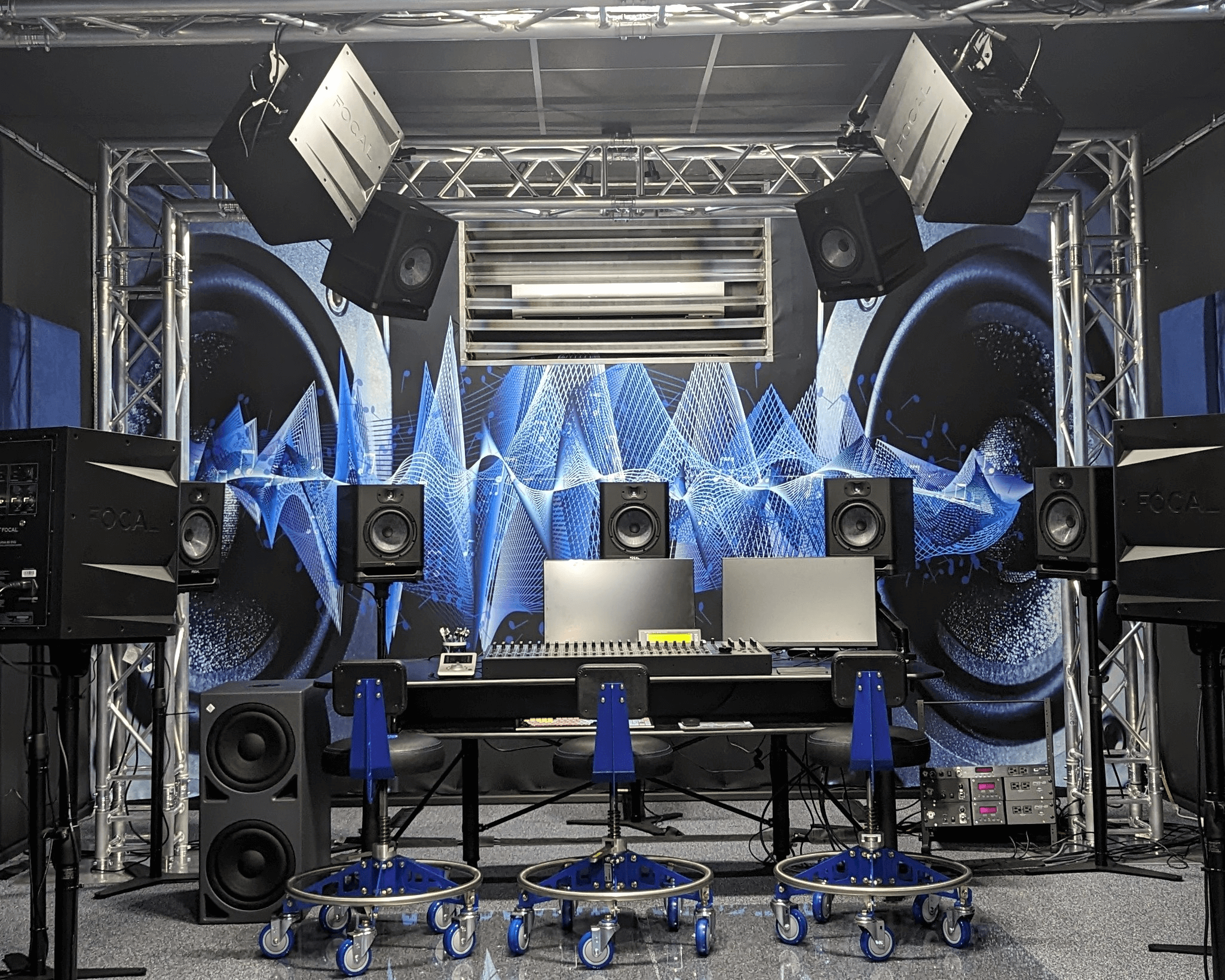7 Tips for Setting Up Your Focal Monitors for Optimal Audio
Whether you're a sound engineer, a musician, or an audio enthusiast, setting up studio monitors is crucial in achieving the best sound quality. Focal studio monitors are known for their exceptional sound clarity, but proper setup is key. Here are some easy and engaging tips to help you get the most out of your monitors.
1. Choosing the Right Location
Placement is vital to optimal sound. For the best audio experience, ensure your monitors are positioned at ear level and form an equilateral triangle with your listening position. This setup, which is a fundamental principle in sound engineering, creates a stereo image that accurately represents your audio, letting you perceive depth and space in your mix. It's similar to how professional audio spaces are designed, where every sound is positioned plainly in the soundscape, giving you total control over your audio.
Furthermore, the room itself plays a monumental role in sound perception. The dimensions, structure, and materials of your studio or space can significantly influence sound performance. As noted by Home Studio Basics, room acoustics can introduce reflection and absorption phenomena that affect sound accuracy. Understanding these principles can empower you to make informed decisions about your studio setup. It's ideal to position your monitors away from corners and ensure they are at least a foot from the back wall, as these areas can cause sound wave reflections that lead to misleading audio feedback.
2. Getting the Perfect Distance
Maintaining the correct distance between your monitors and the walls is essential. This prevents unwanted acoustic reflections and enhances sound accuracy. An ideal distance is around 8-12 inches away from walls. This positioning helps reduce standing waves, which reflect back and forth in a room, causing peaks and nulls at specific frequencies.
Experimenting with distance is crucial, especially if you're in a smaller space where moving your setup is more complex. Tools like REW or Sonarworks can help strategize the perfect distance, optimizing the room's natural acoustics. By testing and recalibrating, you ensure that the listening experience remains authentic, retaining the brilliance of your Focal studio monitors no matter where they're positioned.
3. Adjusting the Monitor Angles
Monitor angles can dramatically affect sound clarity. Angle them towards your ears to ensure you're in the sweet spot, capturing every audio detail. This can be likened to crafting a work of art where placement and perspective define perception, as your seating area becomes the canvas these sonic brushes paint upon. The meticulous design of Focal's monitors ensures that when angled correctly, high frequencies, typically less diffused than lower ones, reach your ears unaltered and accurately.
The concept of the 'sweet spot' is where the audio signals intersect perfectly, creating a focused area of sound detail. Direct the tweeters toward your listening position, as these produce high-frequency sounds essential for identifying subtle elements in your mix. The equilateral triangle setup is a trusted standard, ensuring that your monitors are equidistant to you and each other. Proper angle adjustment guarantees a centered and balanced response across the frequency spectrum.
4. Calibrating Volume Levels
Proper volume calibration prevents distortion and allows for a balanced mix. Use the volume controls to match your working environment. It's crucial to remember that improper volume settings can result in unbalanced soundscapes, with certain frequencies overpowering others, obscuring the overall clarity of your mix. This is an essential practice in any recording or mixing setup, especially when striving for professional-quality results.
Calibrated tools like a sound level meter can help objectively set your monitor levels. Consider the recommended monitoring SPLs (sound pressure levels) for mixing purposes, typically around 82-85 dB SPL for small studios. This technique helps reduce listening fatigue and ensures your mix dynamics are audible and comfortably perceived. A consistent volume calibration routine ensures aural consistency across diverse playback systems.
5. Taking Room Acoustics into Account
Room acoustics can significantly impact sound quality. Consider adding acoustic panels or diffusers to manage reflections and create a more accurate listening space. Using materials that absorb or scatter sound waves can dramatically influence how audio travels and is perceived within a space. Diffusion and absorption improve the room's acoustic environment, clearing up muddy tones and allowing more precise sounds to emerge, as shown in home studio setups.
Investing in quality acoustic treatments isn't just a professional realm necessity but also a rewarding one. Imagine a scenario where your mixes translate superbly across various environments because your studio provides trustworthy and reliable sound feedback. By tackling early reflections with diffusers or thicker panels, you keep unwanted echoes from clouding your perception, ensuring pristine aural feedback that holds up under universal scrutiny.
6. Exploring Acoustic Treatment Options
Going beyond basic acoustics, it's important to explore treatment options like bass traps and diffusers to handle lower frequencies and avoid muddiness in your sound. This focus on lower frequencies is crucial as they can often pile up in corners and edges, creating an imbalance that distorts your audio clarity. By understanding the importance of treating these lower frequencies, you can effectively absorb these excessive low-end frequencies, addressing the foundational balance of your studio's acoustic profile and feel more informed and aware.
Adding specific absorptive materials, like foam panels or full-range traps, can target critical mid- to low-end resonance frequencies. This enhancement is especially beneficial in rooms with complex shapes or compositions where reflection coherence becomes a priority. By using these absorptive materials, you can engage in professional-grade transformations that elevate the entirety of your studio's sound reproduction capabilities, giving you a sense of reassurance and confidence in your sound quality.
7. Fine-Tuning Audio Settings
Dive into your monitors' settings and fine-tune them according to your preferences. This can tailor the audio output to suit your style and room setup. Every environment holds distinctive characteristics; thus, an optimized monitor setting can enhance subtle sound details you haven't noticed before. This involves engaging with basic controls and exploring options that allow minute adjustments on further levels such as EQ, gain settings, and crossover frequency, among others.
Adopting a mindset akin to that of a sound artist allows you to perceive the tonal balance and define your sound signature shaped by these settings. If available, look into utilizing DI (digital/analog) converters as they refine signal transfer pathways and improve the playback quality. Emphasizing hands-on exploration and gradually syncing your preferences with your room's unique acoustics ensures that your audio productions resonate with unmatched distinction.

